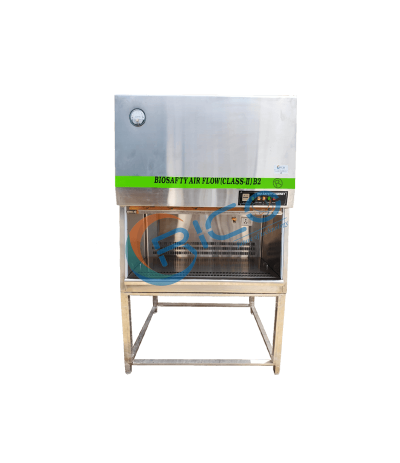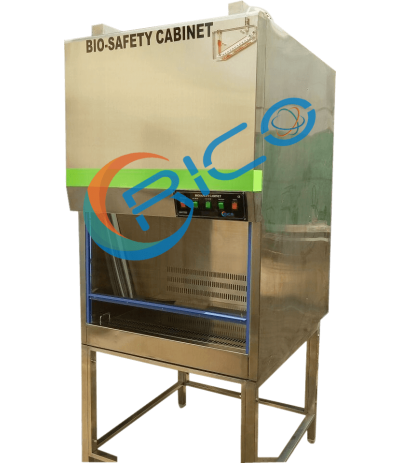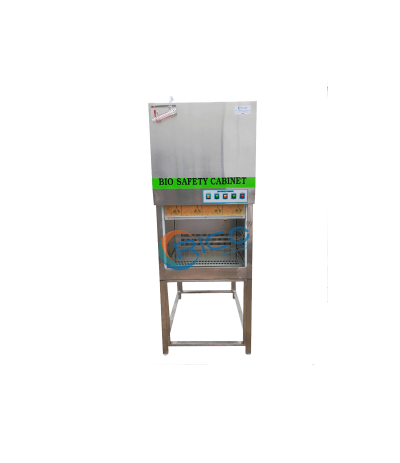BIOSAFETY BIOLOGICAL SAFETY CABINET Class II re-circulates 70% of air through HEPA filter & 30% Exhaust.
RICO Biological Safety Cabinet Class II is an open-front, airy cabinet. This cabinet provides a HEPA / ULPA-filtered, reactivated mass airflow within the work area. The exhaust air from the cabinet is also filtered by the HEPA / ULPA filter. Thus, class II will provide biological safety cabinet personnel, environment and product protection. While HEPA / ULPA filters are effective to trap particulate and infectious agents, these filters will not capture volatile chemicals or gases.
In the microbiological laboratory, using a biological safety cabinet class 2 provides additional potential and additional capacity and benefits of protecting the contents contained within it from the extrajudicial contaminants. This capability is provided by HEPA-filtered, re-circulated mass airflow within the workbench.
It is suitable for the inclusion of biological hazardous materials and, unlike class I biodiversity cabinet, it is also suitable for cell cultures as a sterile environment.
BIOSAFETY BIOLOGICAL SAFETY CABINET Class II re-circulates 70% of air through HEPA filter & 30% Exhaust.
RICO Biological Safety Cabinet Class II is an open-front, airy cabinet. This cabinet provides a HEPA / ULPA-filtered, reactivated mass airflow within the work area. The exhaust air from the cabinet is also filtered by the HEPA / ULPA filter. Thus, class II will provide biological safety cabinet personnel, environment and product protection. While HEPA / ULPA filters are effective to trap particulate and infectious agents, these filters will not capture volatile chemicals or gases.
In the microbiological laboratory, using a biological safety cabinet class 2 provides additional potential and additional capacity and benefits of protecting the contents contained within it from the extrajudicial contaminants. This capability is provided by HEPA-filtered, re-circulated mass airflow within the workbench.
It is suitable for the inclusion of biological hazardous materials and, unlike class I biodiversity cabinet, it is also suitable for cell cultures as a sterile environment.




